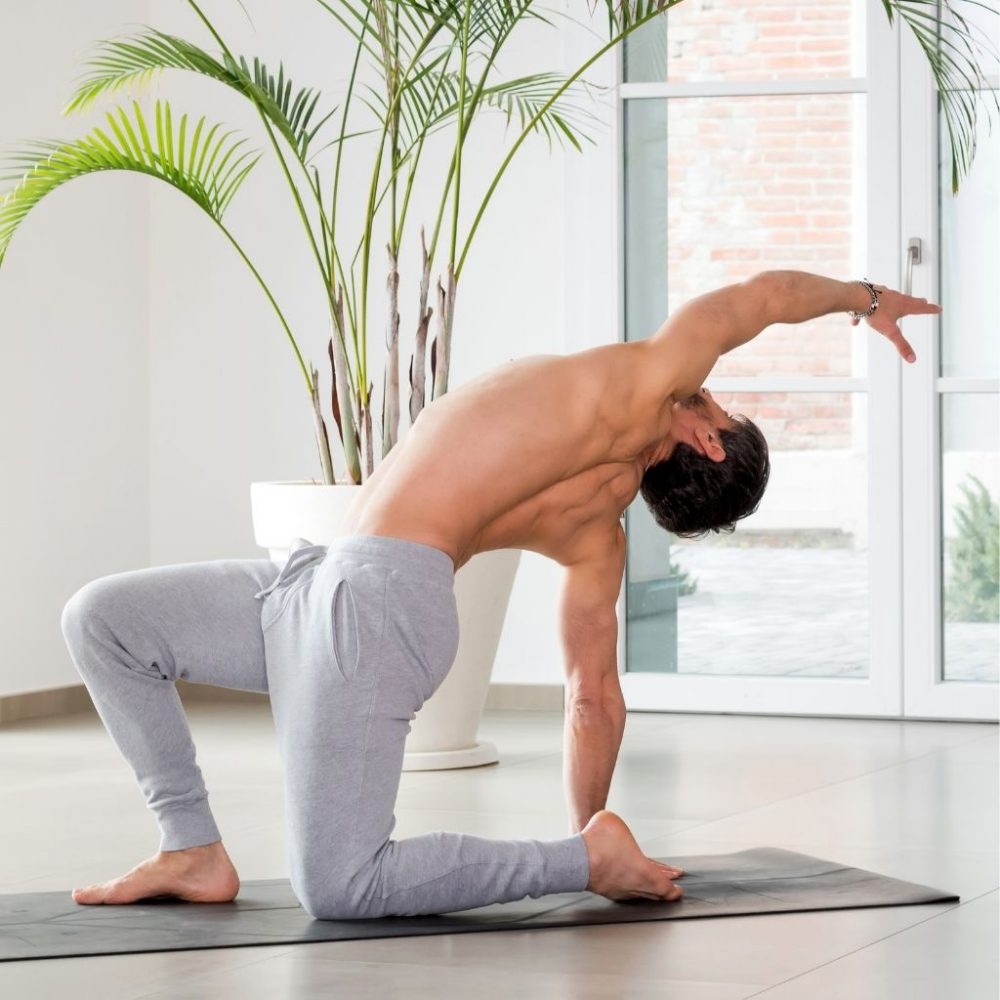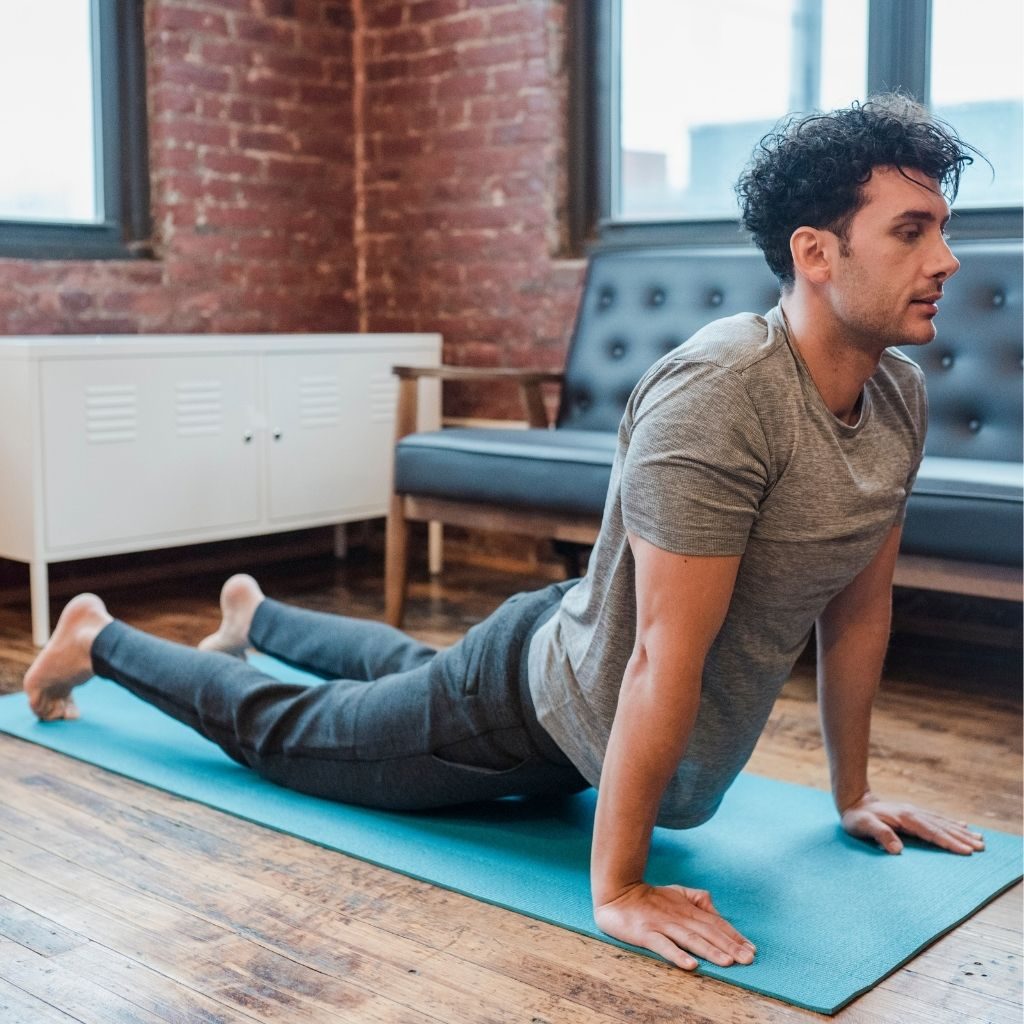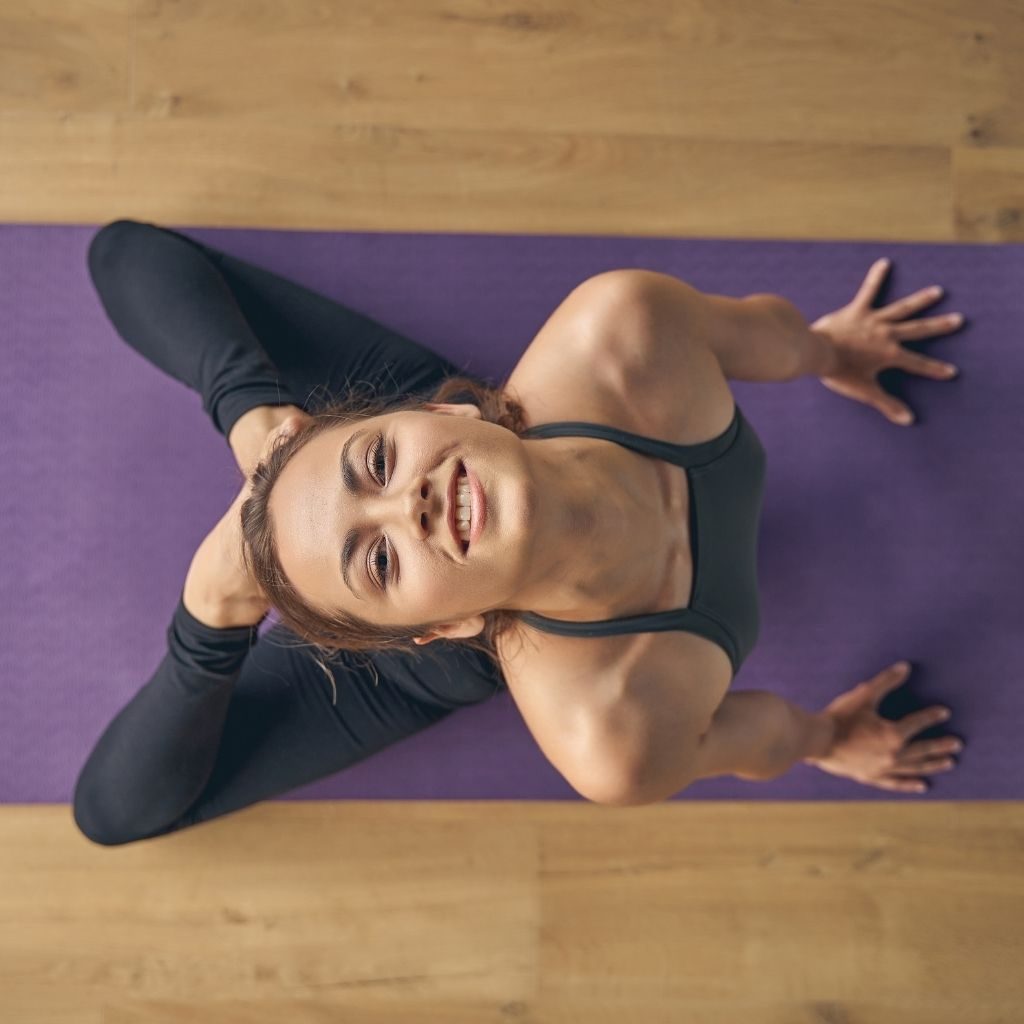Are Backbends Good for Your Spine? (6 Amazing Benefits)
Backbend movements help prevent back pain and preserve the spine from accidents. They lengthen the spine, stretch the front and back of the body, and strengthen the muscles in your shoulders, chest, and hips, which helps you improve your posture and flexibility. Having a positive effect on the chakras, they contribute to your general well-being.

They can also be very effective in relieving specific lower back pain caused by prolonged sitting and helping to restore balance to the body. Still, you should attempt them lightly if you have pre-existing back pain.
Backbends are gymnastic contortions during which the spine bends backward, using the hands for support.
This article gives an in-depth overview of the tremendous benefits backbends can bring to your spine.
Let’s begin!
1. Backbends help prevent back pain associated with prolonged seating
Backbends are effective in preventing low back pain, muscle contracture, sciatica, and also herniated discs. One solution for back pain is to do a few backbends anywhere for short breaks throughout the day. This allows it to stretch and dissolve the tension as it builds up.
Back problems usually occur when you sit for a long time every day. And when the pain has already set in, a backstretch is mainly used to inform your nervous system to release the painful muscle.
Backbends act on the lumbar vertebrae
Backbends are intended to help you preserve or develop the spine’s flexibility by targeting the lumbar vertebrae. These movements:
- ensure the health of the joints by stimulating the production of synovial fluid; synovium decreases friction by lubricating the joint, in addition to absorbing shocks.
- Help supply your intervertebral discs with nutrients and oxygen and help to eliminate their metabolic waste.
- It helps to stretch and relax the muscles attaching to your lumbar vertebrae.
Sitting for a long time affects the spine
Daily tasks destabilize us and take us away from an optimal position.
When your spine sits for hours a day, leaning more toward a screen than ever before, your organs stay in one place and work less efficiently. Because:
- your diaphragm moves less.
- Your breathing becomes shallower.
- And your lower spine is compressed.
Leaning over a desk all day makes your back miserable. Fortunately, relief is only a few feet away.
All you need to do is step away from your workstation and do your stretches.
Wanna know more? 👉 Here Why yoga is good for office workers

2. Light backbends help protect your spine from accidents
According to a study conducted by American specialists in endocrinology and physical medicine and rehabilitation, specific yoga postures can increase the risk of vertebral fractures in predisposed people. Even for those already used to this practice, spinal compression or compression fractures of the spine can cause severe pain in the back.
The spine’s vertebrae undergo various impacts
Every day, the body undergoes many shocks, which force the spine to react.
Fortunately, between each of the vertebrae are intervertebral discs whose role is to cushion the impacts and promote the mobilization of the vertebrae between them.
These tiny natural cushions sometimes have to face severe tests, creating long-term injuries, like herniated discs. These fractures occur in the thoracic, lumbar, and cervical spine.
Whether you are new to yoga or already a true professional, you are not immune to this type of incident.
That’s why backbends come in handy.
Back stretches help your spine cope better with shock
“The spine needs a good level of flexibility to avoid injury,” says Jarlo Ilano, a physiotherapist certified by the American Board of Physical Therapy Specialties.
Indeed, a spinal structure that is not flexible enough undergoes too much stress and cannot respond adequately to unforeseen impacts. This is why it’s essential to mobilize the spine daily.
Thanks to the backbends, you can also move each vertebra to distribute the tensions on them, avoiding overcompensation during physical activity and regular movement.
By doing backbends like the Cat-Cow pose, you properly prepare your body for your sessions. It makes your back muscles more elastic, gives your body more mobility, and helps prevent injury.

3. Backbends strengthen the muscles and ligaments in your back
Backbends like the Cobra and the Bridge strengthen the ligaments and muscles in the shoulders, chest, and hips, bend, cover, and strengthen the spine, ensuring good posture on the back. In addition to considerably reducing the risk of injury, they provide harmonious muscle development for the whole body.
Strong muscles and ligaments have a stabilizing effect on the vertebrae
Ligaments and muscles are essential for the spine’s health; they play a vital role in maintaining your vertebrae as they have a stabilizing effect.
The main muscles of the lower back that benefit from the backbends are latissimus dorsi, paravertebral, psoas, psoas-iliacus, the square of the lumbar region, pyramidal and sacro-lumbar muscles.
The stronger your ligaments, the stronger your muscles, the easier it’s to support your spine and thus to move appropriately.
A stabilized spine ensures good posture
Including the pelvic floor, the muscles in your abdomen provide support for your trunk by stabilizing your spine and pelvis.
A strong center thus allows your body to perform its primary function, which is to move without being affected by pivoting or sagging.
It also includes any other external forces that could act on it and injure it. This helps you mobilize your spine better because the stronger your core muscles, the better you will be to maintain a stable and supported posture.
Specific backbends help work targeted parts of the back
When it comes to backbends, there are different variations.
You can play with the spacing of the hands and the orientation of the palms to focus more on one part of the back than another.
Ardha Chakrasana (Standing Backbend Pose) and Ustrasana (Camel Pose) are, for example, effective in toning lower back muscles. While Shishuasana (child pose) deeply relaxes the back.
To enjoy all these benefits, listen to your body, your breathing and avoid straining yourself as much as possible.
Because, while backbends are suitable for your back, some can be too intense on your spine and injure you very easily.
You may also like 👉 Is Ashtanga Yoga Bad For Your Back?

4. Stretching back help you relax the spine
When included in the daily routine, the passive backbend significantly relaxes the spine’s muscles, relieves the tension, reduces back fatigue, and improves posture.
Stretching helps relax your back muscles
According to Fabien Chasse, osteopath, the best solution to relieve muscle tension is physical activity. To do this, you can use backbend moves.
Since these poses mobilize your whole body through muscular work and ample breathing, they allow you to escape pain and fatigue for a long time.
Backbends relieve tension
When you’re tense, you need to release, to exert yourself. The more you exercise your muscles, the more energy you release.
The important thing is to strengthen the deep muscles that support you, that is to say, the posture muscles.
Backbends help you stretch the superficial muscles in your spine, those strained by stress, to loosen them up better.
Stretching can relax the spine at any time of the day
Ideally, you can backbend yourself in short parentheses throughout the day when possible.
But if you have long and busy working days, it’s also possible to wait until the evening to perform a passive backbend to relieve your tensions.
You can hold this backbend for as long as you want, but make sure you do it for at least three minutes.
Some backbends use props you can find at home, but feel free to use yoga bricks if you have them.
5. Backbends ensure general well-being and promote the opening of your chakras
Backbend yoga asanas help open specific chakras in the body, such as the kundalini energy found at the base of the spine, which contributes to overall physical and spiritual well-being.
Backbends promote the balance of the chakras
Backbends asanas allow the balancing and the alignment of the energy centers located on the spine so that they are neither too open nor too closed.
Thus, the vital energy circulates correctly in your body.
Using, for example, the cobra pose, you can balance the heart chakra (Anahata). It is associated with the heart but also with the lungs, empathy, and feelings of love.
Chakras influence your well-being
Chakras, energy centers of the body, are located in the astral body, all along the spine, from the base to the top of the head.
According to Kalyan Jot, a certified yoga teacher, a chakra imbalance can take a toll on your body and mind. It can cause emotional or physical pain.
Therefore, backbend postures that open and develop your chakras allow you to be in good health.

6. Backbend movements improve your flexibility
Many muscles attach to the spinal cord in the neck, upper back, kidneys, and abdomen. However, these muscles weaken in people who lack flexibility. Working on flexibility with backbends then has the advantage of protecting the spine and strengthening the back muscles.
As you bend over and stretch back and forth, your spine becomes stronger. Over time, your back muscles also flex more easily, helping you to bend effortlessly.
Wanna know more? 👉 Here 6 Yoga Poses For Flexibility And Strength
Who shouldn't attempt backbends?
Backbends shouldn’t be made by the elderly in some cases, pregnant women, people who have recently had surgery, or with a severe injury to the lower back, shoulders, and neck.
People with health concerns should always consult their doctor before practicing backbend yoga.
It is also essential to learn and practice the more complex asanas with the help of a certified yoga teacher.
Older adults: contraindications for backbends
For the elderly, there are some restrictions in terms of backbends, in particular in cases of:
- recent surgery
- respiratory or heart failure, etc.
If you are a senior, it is necessary to have a medical check-up before starting the backbends. Then work with a certified teacher to adapt the postures to your age.
Some backbend yoga poses can seem complicated, especially as you get older and stiffer. If you are hyperflex, avoid going too far and make sure your muscles are supporting your back.
More “flexible” backbends can help you preserve:
- your hips and joints, which are often weakened
- your blood pressure
- your breathing rate.
Other special cases
Backbends should be avoided by pregnant women and individuals suffering from:
- blood pressure problem
- headache and insomnia
- untreated hypertension
- osteoporosis or spinal stenosis
- anxiety and lower back pain which worsens with flexions.
Also, before practicing intense backbends, it is essential to strengthen the back muscles and relax your shoulders.
Also, keep in mind that to approach these poses, you have to be patient. Give yourself time to balance your strength, flexibility, and body structure with respect for what your muscles are capable of doing.

Conclusion
Ultimately, backbends provide many benefits to the spine. They are a great way to protect your spine from accidents when performed before yoga sessions and also help you prepare your back for the most challenging asanas.
For those who work several hours per day in a seated position, performing backbends regularly can prevent back pains and help to relax. Because these movements directly affect your spine, they promote the opening of chakras and ensure general well-being.
People can also gain flexibility and strength using backbends to improve mobility and performance.
If you have any health problems or have recently had an operation, you should avoid backbends or discuss with your doctor before starting.
You are probably already performing backbend yoga poses to relax but not realizing it. After all, these are just natural bends and stretches that help relieve your back pain.
However, if you do it with breathing and awareness techniques, it boosts the effect!

